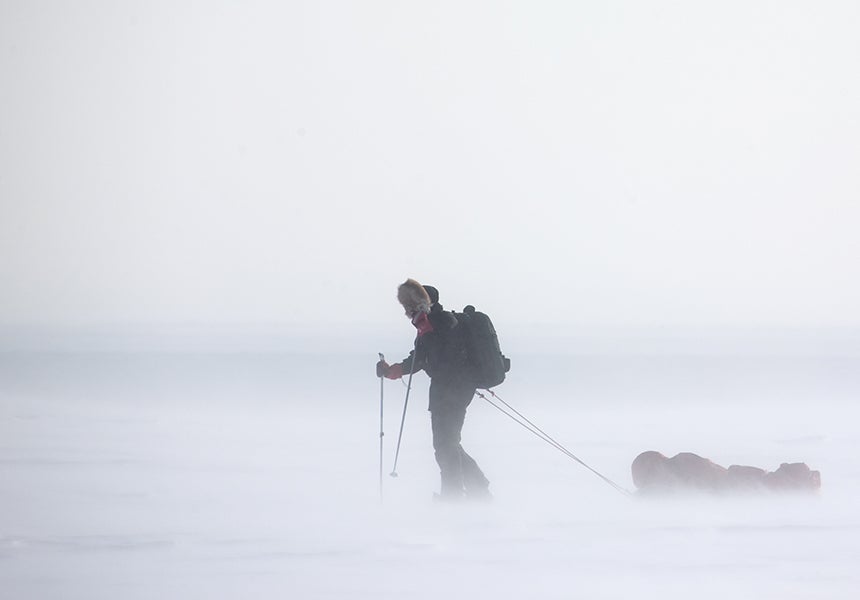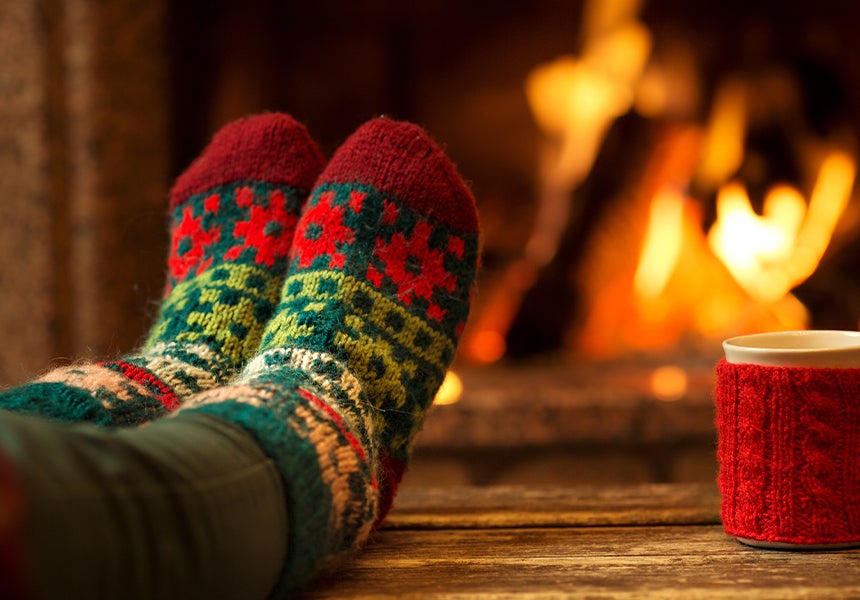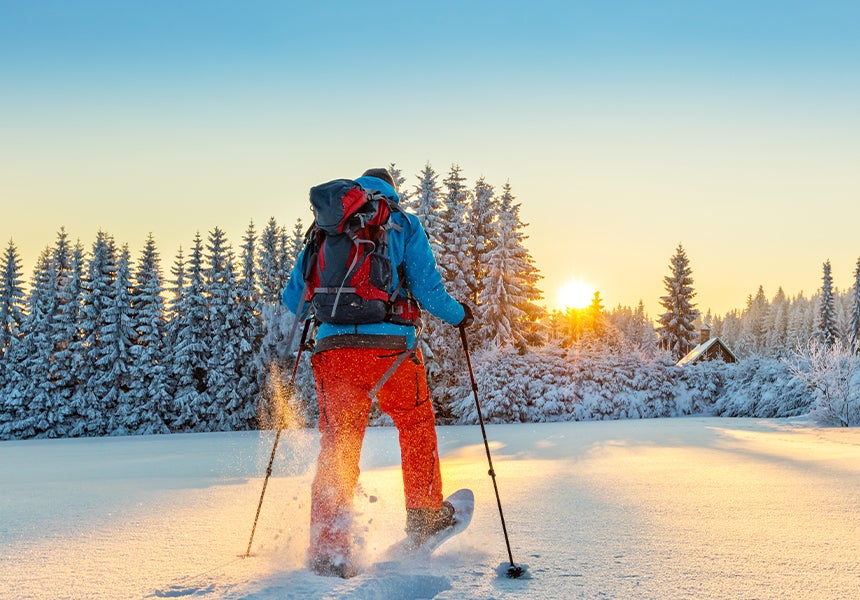
Our Editors independently research, test, and rate what we feel are the best products. We use affiliate links and may receive a small commission on purchases.
Have you ever noticed that some people never seem to get cold, while others can’t seem to get warm? You could be sitting there in a winter coat, gloves, hat and thermal underwear, and some kid will be running around in shorts and a t-shirt, and be fine, while you’re freezing. It just isn’t fair! The biological fact of the matter is that people have different metabolisms and comfort ranges when it comes to body temperature. How do you stay warm when the temperature drops? It is a different thing for just about everyone, with so many variables that it can make your head hurt just trying to figure them all out, kind of like an ice-cream headache. Let’s take a deeper look into what you can do to stay warm throughout variations in temperature range. This will include looking at ways to insulate yourself, as well as some of the biology that is taking place as you cool down and warm up. Along the way, we’ll try to displace some of the biggest myths related to staying warm. It’s getting chilly in here, so let’s get started.
Cover Image: Shutterstock/Olson
Age factors
I grew up on and around the family farm and my grandfather. It could be the middle of summer and I’d come to the house in shorts and a t-shirt, sweating like a fool, and here would be my grandfather out working on the tractor, wearing a flannel shirt. As he got older and retired, I noticed that he’d go so far as to add a sweater to his layers. According to Providence Medical, there are several factors that can play into this.
As we grow older, our blood vessels aren’t as elastic as they are when we’re young, which in turn causes a decrease in blood circulation. Our bodies are pretty miraculous when it comes to thermal conditioning. Our blood moves oxygen and nutrients throughout our bodies. It also moves heat, and as our bodies lose heat, the body tends to decrease blood flow to the extremities, as the important stuff – the brain, heart and lungs – get the lion’s share. You always get hypothermia in your fingers and toes first – because you can live without them. As we get older, and I don’t mean old, I mean older, as in 30 is older than 25, we will see changes in how well our blood and body heat circulate. And it is different for every person, much like a fingerprint. This explains why I can be on one end of the couch and be too warm, and my wife can be sitting next to me, wrapped in a blanket, complaining that she’s freezing.
Biology stuff

Metabolism is another big factor. We all know that metabolism refers to the process of how your body takes food and converts it into energy. Like everything else, we all metabolize food differently, and our body chemistry plays a role in how we regulate body heat. Did you know that shivering is a part of the metabolic process? Your body temperature starts to drop, and your brain tells your muscles to get to work metabolizing nutrients to help create heat. SO what happens? You shiver. You normally shiver in your arms, legs and, most commonly, your jaw. Why the jaw? It’s a flexible muscle group that is close to the brain, so where does that heat energy go? Yep. Back to the important parts.
Metabolism is another thing that slows down as we age. Again, it is different for just about everyone. That’s why weight management is harder for some than it is for others, especially as they get older.
Weight and fat aren’t as important as you would think. In the animal world, animals put on weight for the winter months, and while it is popular to think that it is due to insulating properties, it really isn’t. It is more of an energy reserve for animals. Yeah, the layers of fat can help insulate internal organs. Think of whales and other marine mammals and this is especially true, but their fat is very different, biologically speaking. Blubber is not the same as fat tissue in humans and other, non-marine mammals. In people, we don’t have fat that gathers in the important areas for it to be effective in those aspects. In fact, it can be the exact opposite. People with weight issues tend to have slower metabolisms, and they can actually suffer from colder temperatures more so than people with healthier weight levels.
Heating the core and layering
Where are you going to lose the most heat from your body? The two areas that lose heat the fastest are the head and the feet. You lose heat at your feet because they are the furthest from your heart, so the heat that is transferred there is already at a disadvantage. You lose heat from your head because it has the most blood flow. If you’re doubting me on that, think of a time you may have got a cut on your head. It bled like crazy, didn’t it? If you want to stay warm, a good hat is a must. It also works well to use a heat source, like a disposable heat pack in you hat to help keep your head warm.
You also need to keep your torso warm. This is where layers for both your upper torso and legs really come into play. Let’s run through the entire layering spectrum, but understand that you should only layer to meet the appropriate weather conditions. Keep in mind that the beauty of layers is that you can adjust on the go fairly easily.
- Wicking Layer – This is the layer closest to your skin, and it should be made of a wicking material that helps pull moisture (sweat) out away from your skin to where it can evaporate but not cool you down. We sweat to cool our bodies, but while we may get warm and sweat in the cold weather, the actual effect of sweating can serve to cool you too much.
- Base Layer – This layer is your traditional thermal underwear. The thickness and materials can vary depending upon your temperature range, so be sure you check the weather forecast before choosing what you wear. Many use a wool, or synthetic wool material for the base layer, as it helps with wicking away moisture from your body as well as insulate.
- Fleece Layer – This is the clothing typically worn over the base layer, and in many cases, people opt for some form of fleece. Typically modern fleece is made from synthetic materials that mimic actual wool fleece. Again, the thickness and type can vary according to personal preference and weather conditions. I often opt for a fleece vest or ¼-zip fleece pullover, as this helps me regulate my temperature.
- Outer Layer – This is your jacket and is the layer that is directly exposed to the elements. Here you should consider something that is wind- and waterproof. If your internal layers are warm enough, many consider using an outer shell parka or jacket as the outer layer to help reduce bulk. In extreme cold weather, an insulated parka or jacket is best. The same goes for your legs, with bibs or pants. Picking a jacket or pants that are appropriate for the activity you intend to pursue also helps. so for skiing, pick a good ski jacket, for snow boarding, you’d do the same. etc…
What about your feet?

Keeping your feet warm and functional is important, and keep in mind that your feet are another area where you can lose a lot of your internal warmth. Sock choice is vital to warm feet and you should look for a thick sock that fits and supports your foot. Wool is the best choice for sock material and you should strongly consider a sock liner to help pull away moisture, especially if you plan to be active while trying to stay warm. Heated socks also help.
The thing that is often overlooked when it comes to keeping your feet warm is air. You need to have some room in your boots to wiggle your toes. Feet sweat a lot. This is why your gym shoes stink, and why your feet can get cold really fast. While wicking socks are important to fight foot sweat, you need a little air to keep those tootsies healthy.
Boot choice is another important thing. Pay attention to temperature ratings on boots, and keep in mind that if a boot says it is good to, say, -20 degrees Fahrenheit, that means with proper sock choices and sustained activity. If you plan to be sitting, go with a warmer boot. Most boots are either insulated with some form of thin insulation, like Thinsulate, or they are what is called a pack boot, which normally has a removable, replaceable liner. The warmest boots are often pack boots, as they are oversized and can pack a lot of insulation into the liner.
Hands up!
When it comes to keeping your hands warm, most folks choose either gloves or mittens. Gloves offer more dexterity for doing things, while mittens will keep your fingers together, preserving warmth. The same basic rules apply for warmth, with layers being important too. Glove liners work the same as a wicking sock, helping to pull moisture away from the skin.
For extreme cold, the optimal combination would be to wear a liner glove, followed by a thin insulating glove. You would then use a thick mitten over the top, keeping air space for finger movement. This would allow you to pull your hand free from the mitten for use, while still keeping a protective layer of warmth for your hand. Heated gloves are also amazing.
Another option, and one that seems to be catching back on a little, is the use of a muff. This is an insulated pouch that hangs on the waist, with opening on each end for you to keep your hands in. It is like wearing an additional, insulated pocket that allows you to keep your hands together. I have even seen some that are powered with a small heating element to boost warmth, and even an example of one that had a window that allowed you to see and play with your phone.
Power me up
There is a growing trend for portable heating units built right into our clothing. That’s a drawn out way to get to something that has been around for some time – electric heat to wrap around yourself. I’m sure it started out with something looking for a way to take an electric blanket with them. I guess that whoever thought it was a great idea didn’t see the old horror movie, The Thing, where the alien monster gets freed from a block of ice because someone tossed an electric blanket over top of it. In my house, it’s a little different. My wife can turn into a monster if someone tries to steal her heated blanket while she’s relaxing on the couch in the winter time. Maybe she thinks she’ll freeze into a block of ice if they do? I tried to take away her blanket once and I’m pretty sure the alien monster came out.
These days, heated vests, jackets and socks are all pretty normal, and can do a great job of keeping you warm in cold weather. This is a great way to supplement your body heat and keep you very warm. I used to use a heated hunting jacket that would keep me very toasty warm, regardless of the outside temperature, but it presented two issues. For one, it was much harder to clean, and two, once one of the wires broke, the game was over. They work great as a way to keep your core warm, however, and make an outstanding layer to your cold-weather clothing plan.

Disposable heat packs
You know what these are – those small pouches of material that you open up, shake vigorously and then they provide heat for your hands, feet or body for several hours. If you haven’t been using them, you should take a look at them, as they work extremely well. If you use them correctly, they can provide many hours of comfort on a cold day.
Regardless of which ones you use or where you put them, there is one key thing to keep in mind – air. The heat is from a chemical reaction. Basically the material inside the pouch is iron and salt. All it needs is oxygen to start a reaction that is essentially rusting, but that reaction gives off heat. For it to work, you need airflow to the pouch. Now this shouldn’t be an issue, as you should have figured out by now in this story that air is important to staying warm. If you want the toe warmer to work, have some space for some air in your boots. The same goes with the hand warmers, etc. I like to toss one in my hat and let it sit by the back of my neck. For the best results, open the pouch the pack comes in, shake it up and set it in the window of your car/truck with the heater blowing directly upon the pouch. By the time you grab it to use it, it’ll be toasty warm. Consequently, if you want to save the pack for use for another day, all you need to do is put it in a ziplock style bag and stop the airflow. Once the air stops, the reaction stops and you can start it up again down the road.
There are also several non-disposable hand warmer options that do the same thing. If you spend a lot of time outside in the cold, you should give them a look.
Hypothermia
The textbook definition of hypothermia, according to the Mayo Clinic is:
“… a medical emergency that occurs when your body loses heat faster than it can produce heat, causing a dangerously low body temperature. Normal body temperature is around 98.6 F (37 C). Hypothermia occurs as your body temperature falls below 95 F (35 C).”
3.6 degrees doesn’t sound like a big deal, but it really is. As hypothermia starts to set in, your body reacts. The blood flow starts to get protected, as we mentioned earlier in this story. It doesn’t take long for things to get bad, too. One area of concern is frostbite, which is where the skin and flesh actually gets damaged due to cold exposure. There is a chance for organ failure due to hypothermia, and is all happens faster than you expect. As they say, you don’t know you’re in trouble until you’re already past being in trouble. It’s best to never get into that spot in the first place by being prepared and dressing for the weather to begin with.
The best way to warm up…
Is to never get cold in the first place. Ever notice that it takes a while to warm back up after you’ve gotten truly cold? In fact, it isn’t healthy to warm up too fast, especially if you’ve suffered from hypothermia. The best way to beat this issue is to never let yourself get cold in the first place. Like the Boy Scout motto goes… Be prepared! It is easier to peel off an extra layer than it is to warm up after you’ve gotten cold. Do yourself a favor and keep warm this winter.
